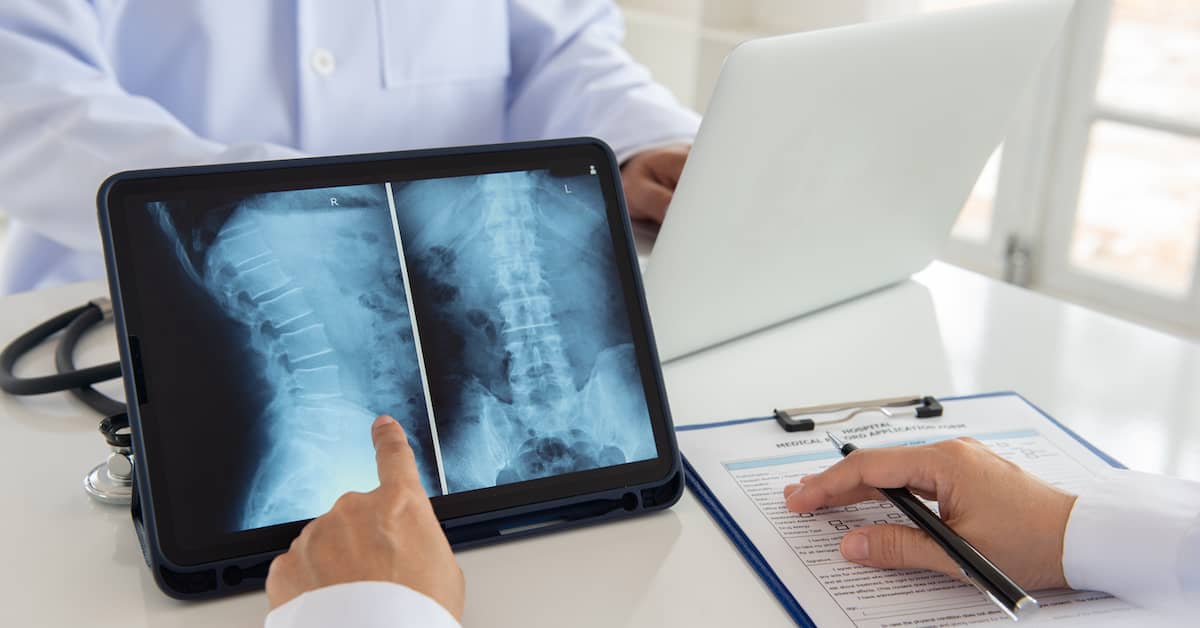
A spinal cord injury lawyer can help you navigate the aftermath of trauma to the spinal cord. One of the most common spinal cord injury questions is: “How will a spinal cord injury affect my life?”
Spinal cord injuries can have a variety of long-term impacts. In many cases, patients will experience complications as well. These complications can result from a host of factors, including genetic and degenerative health conditions, prolonged immobility, and more.
If you or a loved one has suffered damage to the spinal cord through the fault of another, you should speak to a spinal cord injury lawyer as soon as possible. Call Hauptman, O’Brien, Wolf & Lathrop at (402) 241-5020 today for a FREE consultation.
Osteoporosis: A Common Complication of Spinal Cord Injuries
One of the most common complications of a spinal cord injury is osteoporosis. As Physiopedia explains:
“Osteoporosis . . . is a disease characterized by a decrease in bone density, both mass and quality. It is a disorder in which bones become increasingly porous and brittle, leading to increased risk of fracture. Osteoporosis is a common long-term complication of spinal cord injury, primarily . . . due to the lack of weight bearing and axial loading, with a 25 – 50% reduction in bone mineral content of the lower limbs over a lifetime, with most bone mineral loss is in the first year following injury.”
The National Institute of Arthritis and Musculoskeletal and Skin Diseases refers to osteoporosis as a “silent” disease. As the Institute explains, “you typically do not have symptoms, and you may not even know you have the disease until you break a bone.” To reduce the risk of developing osteoporosis following a spinal cord injury, accident victims can take steps such as:
- Being physically active and going to physical therapy as prescribed by doctors
- Taking any medications prescribed by doctors for treatment of osteoporosis
AND - Eating a “nutritious diet rich in calcium and vitamin D” to help promote bone health.
The most significant risk associated with osteoporosis is the increased likelihood of suffering a bone fracture. For individuals who are living with spinal cord injuries, the risk can be especially high.
If the injury compromises your balance or your ability to walk, there is a greater chance that you will fall and suffer a broken bone as a result. This can lead to additional costs and limitations, as well as the potential for additional complications.
Other Common Complications of a Spinal Cord Injury
Along with osteoporosis, spinal cord injuries can lead to additional complications affecting the area of injury (local complications) and the body as a whole (systemic complications). SpineUniverse provides the following overview of these different types of complications:
Local Complications
Localized complications of spinal cord injuries can include:
- Neuropathic Joint Arthropathy – Neuropathic joint arthropathy is a “delayed” complication of spinal cord injury that can onset as late as 15 years following the injury. Symptoms include pain, deformity, loss of function, and an audible clicking sound with movement.
- Spasticity – Spasticity is a muscular condition that causes long-term muscle contraction. It reportedly affects between two-thirds and three-quarters of all spinal cord injury patients.
- Syringomyelia – Syringomyelia is far less common than spasticity (affecting about 3% of patients), but it may require surgery in some cases. It is characterized by a cyst in the spinal cord that grows in size over time.
Systemic Complications
Systemic complications of spinal cord injuries can include:
- Autonomic Dysreflexia – Autonomic dysreflexia occurs as a result of a secondary injury below the level of a patient’s spinal cord injury. It is characterized by disruption of communication between the body and brain above the injury level.
- Bowel and Bladder Problems – Certain types of spinal cord injuries can cause bowel problems and/or bladder dysfunction.
- Cardiovascular Complications – Low blood pressure is a common cardiovascular complication of a spinal cord injury that can lead to dizziness, weakness, and temporary loss of consciousness.
- Neuropathic Pain – Neuropathic pain is pain caused by damage to the nerves that transmit information between the spinal cord and the brain. SpineUniverse reports that as many as 40% of spinal cord injury (SCI) patients may experience chronic neuropathic pain.
- Pressure Sores – Pressure sores (or pressure ulcers) can result from prolonged immobility during spinal cord injury recovery. While treatable, pressure sores can have their own potentially fatal complications if ignored.
- Respiratory Complications – SCI affecting the cervical and thoracic regions of the spine can cause respiratory complications, which can also potentially be fatal in some cases. SpineUniverse reports that respiratory complications are “the leading cause of death in patients with chronic SCI.”
- Secondary Immunodeficiency – In addition to respiratory diseases, spinal cord injuries can also cause secondary immunodeficiency. SCI patients who develop secondary immunodeficiency may be at increased risk for infections, pneumonia, and other diseases for the remainder of their lives.
Speak to a Spinal Cord Injury Lawyer Today
You may be entitled to significant compensation if the negligence of another party or parties led to your spinal cord injury. The key is to investigate the accident promptly and identify those at fault, as well as calculate not only the current costs associated with the injury but the long-term expenses and complications you are likely to face.
The attorneys at Hauptman, O’Brien, Wolf & Lathrop have more than 200 years of combined experience representing clients in nearly every type of personal injury case. We are well-versed in the complexities of spinal cord injury claims, and our team will fight hard to protect your rights and safeguard your future.
Contact Hauptman, O’Brien, Wolf & Lathrop today if you have been diagnosed with a spinal cord injury caused by a serious accident. Our spinal cord injury lawyers serve clients in Omaha, Sarpy County, and all of Nebraska, as well as nearby Iowa.


I can’t thank Jeremy, Nicole, and Andrea enough for the way they handled my case. After my car accident, I felt overwhelmed and unsure of what to do, but their team stepped in with confidence, compassion, and clear communication every step of the way.
They explained things in a way that actually made sense, fought hard to make sure I was treated fairly, and never made me feel like just another case number.
If you’re looking for attorneys who actually care and know how to get things done — these are your people